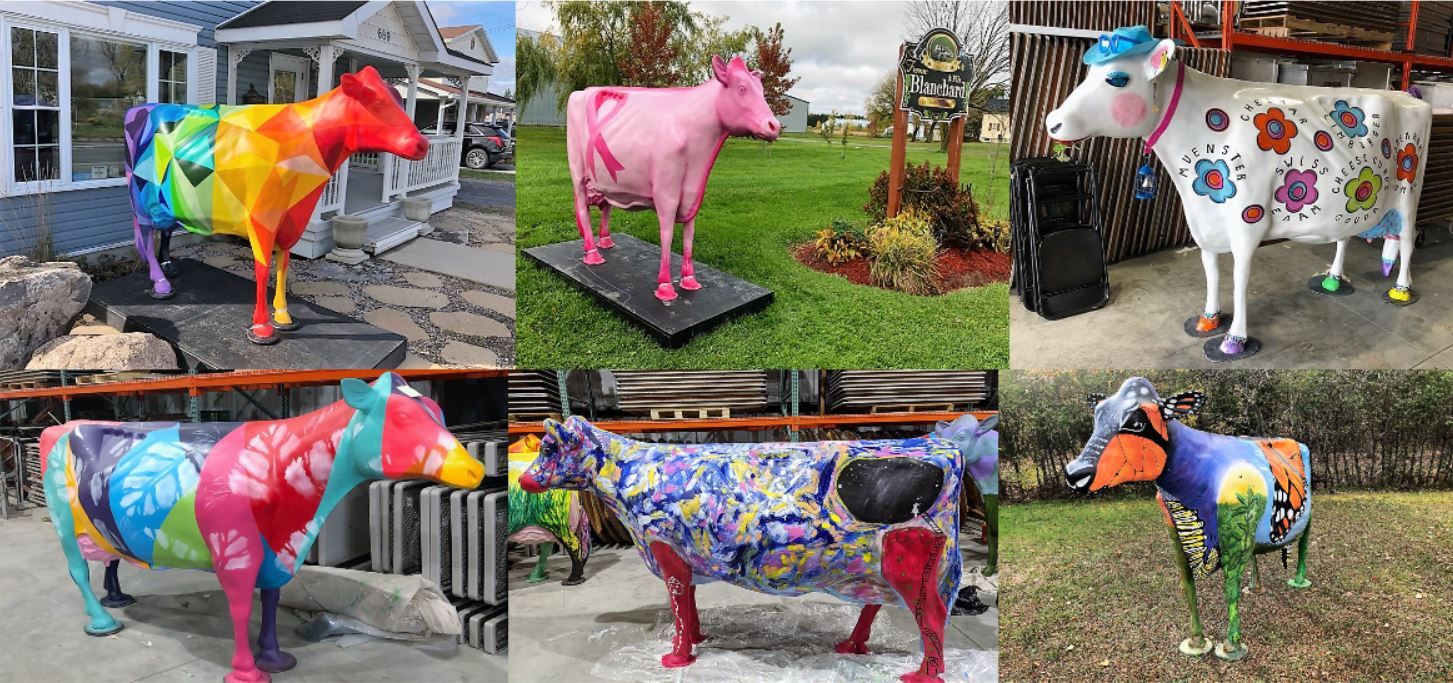The mystery of the painted cow statues has been solved.
Organizers of the St-Albert Curd Festival announced Thursday that they are responsible for the multiple brightly-colored painted cow statues throughout the St-Albert-Embrun-Casselman region. The project ‘Hey Cow, I See You Now!’ has been created to fill at least some of the gap caused by the cancellation of this year’s festival due to the COVID-19 pandemic.
“We were looking into different scenarios to still do something to say hi to our patrons and sponsors who have supported the event for so many years,” said Michel-Olivier Matte, Executive Director of the St-Albert Curd Festival. “Since the cow is so emblematic to our festival – it’s on our poster every year and is our mascot – we thought we could have some of them painted across the region and make a circuit out of it.
“People can see them, but still stay in their social bubble, because it does not gather a crowd. They are free admission and people can go anytime to see them.”
The decorative bovines have created quite a buzz on social media over the past two weeks.
“You can’t imagine how many people have contacted us in the past few days saying “I want a cow!’” Matte laughed, noting festival organizers are working on other plans to display the statues. “We hope we can do a curd festival next year, so we are studying different scenarios, like gathering all the cows on the festival site for the event.”
Over a span of about 30 kilometres, people can admire the cow statues scattered throughout the region. Some are located at the offices of companies, which support the festival, including principal sponsor Fromagerie St-Albert. The vast majority of the statues are located on farms which are members of the factory’s Cheese Co-op and will remain in their current locations throughout the upcoming winter. There are 20 statues in all, 19 of which have been installed and a final one to go up in the next few weeks.
The 17 artists who brought the cows to life with their colorful artwork come from throughout Prescott-Russell, as well as from Ottawa and Montreal.
“Most are Franco-Ontarian artists,” Matte noted. “One of the goals of the festival each year is to support Franco-Ontarian arts.”
While the public now knows where the cows came from, there is more to the mystery than just who was responsible for placing the bovines. The cows started off as identical plain primer-painted statues, but each finished bovine represents a story created by the individual artists who worked on the project.
“I’ve been raising Monarch butterflies for three years now and the idea (of my artwork) is to raise awareness of the importance of the pollinator and also of milkweed and how without milkweed we wouldn’t have the Monarch,” said artist Shanna Steals, who hopes her work will inspire people to do research on the plight of the Monarch. “There’s a message there and I thought it was the perfect opportunity, because it is on a cow and milkweed is something that grows wild and something that is native to our region. It’s a subject that’s very important to me and the work I am doing for the environment.”
Although the statues were originally planned as a temporary project, they have proven so popular that organizers of the St-Albert Curd Festival are now looking at having even more created each year.
“We weren’t too sure how people would receive the project, but it’s been so positive,” Matte observed. “People are really loving them, so why not do more if people like it that much.”
The St-Albert Curd Festival website has a photo gallery of all of the cows and a list of artists who contributed to the project. There is also an interactive map of the route which can be used to check on the locations of the cows, as well as a Google Maps route which can be used with GPS.

Artist Shanna Steals works on her statue. An environmentalist, Steals’ work was created to draw attention to the plight of the Monarch butterfly.



i absolutely love these guys! they make my day everytime i pass by them🐮💞thanks for your work.
Thank you so much for the kind words. I love the cows too. Great idea by the festival organizers. Reid